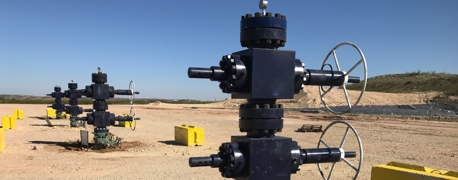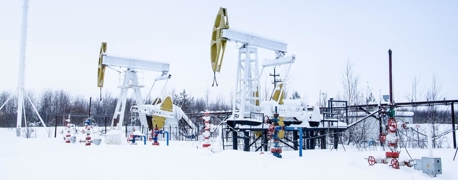What Does a Leasehand Do?

Every position on an oil rig is crucial to the collective success of drilling operations. Among these roles, the leasehand stands out as a fundamental yet often underappreciated figure. While not widely recognized outside the industry, the leasehand plays an indispensable role in the smooth operation and maintenance of drilling rigs. Through this blog, we aim to shed light on the duties of a leasehand, the challenges they face, and their impact on the overall efficiency and safety of oil rig operations.
Duties & Responsibilities of a Leasehand
At the core of a leasehand's job are tasks that ensure the rig's operational integrity. From the general upkeep of the rig site—including cleaning, painting, and performing minor repairs—to the critical handling of drilling equipment such as drill pipes and collars, leasehands are the all-rounders of the rig. Their hands-on work supports the drilling process and contributes significantly to the rig's productivity.
Whether working on land or offshore, leasehands are responsible for:
- Handling Critical Drilling Equipment: Leasehands are responsible for the handling and maintenance of drilling equipment, such as drill pipes, collars, and other necessary tools. This involves ensuring that the equipment is clean, functional, and ready for use at all times. The careful handling of these items is crucial to the drilling process, as any mismanagement can lead to delays, equipment damage, or even accidents. Leasehands must be meticulous in their work, understanding the importance of each piece of equipment to the rig's overall operation.
- Supporting the Drilling Process: Beyond the maintenance of equipment and the rig site, leasehands play a supportive role in the drilling process itself. They assist in the assembly and disassembly of drilling equipment, prepare and align drill bits, and ensure that the drilling area is ready for operations. Their work is critical in minimizing downtime between drilling activities.
- Continuous Learning and Adaptation: The duties of a leasehand provide a foundational understanding of rig operations, but they also offer an opportunity for continuous learning and skill development. Leasehands are encouraged to learn from their experiences on the job, gaining knowledge that can lead to advancement within the rig hierarchy. The ability to adapt to new challenges, learn from more experienced colleagues, and take on increasing responsibilities is crucial for those looking to progress in their careers.
Climbing the Ladder: Progression and Teamwork
Though starting at the entry level, a leasehand is not confined to the bottom rung of the career ladder. Experience and dedication can lead to advancement into roles such as floorhand (also known as roughneck), derrickhand, and eventually, driller.
A leasehand's job is highly collaborative, requiring them to work closely with other members of the drilling team. They are often the ones who provide direct support to these positions, ensuring that operations proceed smoothly and efficiently. The ability to communicate effectively and work as part of a team is essential for a leasehand, as the success of drilling operations depends on the coordinated efforts of the entire crew.
Work Environment: Onshore vs. Offshore
The differences between working as a leasehand on a land rig versus an offshore oil rig go beyond the mere location of their workplace. Each environment presents unique challenges, demands, and opportunities that can significantly impact a leasehand's daily life and long-term career path.
Geographic & Environmental Conditions
- On Land: Leasehands on land rigs operate in a variety of geographic locations, ranging from deserts to forests, which can influence the working conditions significantly. For instance, working in a desert may require coping with extreme heat and sandstorms, while forested areas might pose challenges with humidity and pests. The accessibility of land rigs also means that workers can usually return home more frequently, maintaining a connection with their personal lives outside of work.
- Offshore: Offshore leasehands work on rigs located in seas or oceans, which can be several miles away from the nearest land. These workers are subjected to the maritime climate, including storms, high winds, and potentially rough sea conditions, which can make the work more hazardous but also more regulated in terms of safety protocols. Offshore rigs often operate on a rotation system, where workers spend several weeks on the rig followed by several weeks off, leading to a unique work-life balance that is quite distinct from most other professions.
Living and Working Conditions
- On Land: The proximity to infrastructure means that land-based leasehands may have easier access to emergency services and supplies. The living quarters can vary widely in comfort and amenities, depending on the location and the operator of the rig. The work schedule might allow for more regular shifts, and in some cases, workers can go home at the end of the day, especially if the rig is not too remote.
- Offshore: Life on an offshore rig is marked by isolation from the mainland. Leasehands live, work, and socialize in the same place for the duration of their rotation, which can be both a challenge and a benefit. Living quarters on offshore rigs are typically compact but well-equipped to support the crew's needs, including recreational facilities. The sense of community is strong, as workers rely on each other not just for operational efficiency but for social interaction and mental health support.
Facing the Elements & Hazards
The role of a leasehand is not without its dangers. The manipulation of heavy machinery, the handling of hazardous materials, and the physical demands of the job itself pose significant risks. Moreover, working in extreme weather conditions, whether the scorching heat of a desert or the biting cold of offshore environments, introduces additional challenges that leasehands must navigate.
Despite advances in safety protocols, the inherent risks of the job mean that leasehands are frequently exposed to potential injuries such as falls, impacts from equipment, and repetitive strain injuries. The physical and environmental challenges of the job necessitate constant vigilance and adherence to safety practices.
The stakes are high in oil rig operations, and negligence can have dire consequences. A lapse in duty by a leasehand can lead to equipment malfunctions, environmental damage, and in extreme cases, catastrophic accidents. The role demands a keen eye for detail and a steadfast commitment to operational protocols.
Safety, Maintenance & Emergency Preparedness
For a leasehand, safety is not just a protocol—it's a responsibility. Rigorous adherence to safety standards and the diligent use of personal protective equipment (PPE) are non-negotiable aspects of the job. A key part of a leasehand’s role in ensuring safety and promoting efficiency is the meticulous maintenance of equipment, which helps prevent accidents and enhances production capabilities.
For leasehands, PPE is more than just gear; it's a critical shield against the inherent dangers of the job. From helmets and safety glasses to gloves and steel-toed boots, each piece of equipment plays a specific role in protecting them from various hazards. Leasehands are trained in the proper use and maintenance of their PPE, ensuring that it provides maximum protection at all times. Regular checks and replacements are part of the routine, ensuring that safety gear meets the rigorous standards required for oil rig operations.
The diligent maintenance performed by leasehands has a direct impact on the safety and production of oil rig operations. Well-maintained equipment is less likely to malfunction, reducing the risk of accidents that can cause injuries or worse. Additionally, regular maintenance ensures that the rig operates at peak efficiency, minimizing downtime and maximizing the extraction of resources.
Leasehands also play a critical role in emergency preparedness. They participate in drills and training sessions, learning to respond swiftly and effectively to fires, blowouts, and other potential emergencies. This preparation is essential in minimizing the impact of incidents, should they occur.
Leasehand: An Introduction to the Oil & Gas Industry
The position of a leasehand, with its broad responsibilities and inherent risks, is crucial to the operational integrity and safety of oil rigs. It offers a unique starting point for those keen on pursuing a career in the oil and gas industry, providing a platform for learning, growth, and advancement. For the resilient and the committed, the journey of a leasehand can be the first step toward a rewarding career in one of the world's most vital and dynamic sectors.


